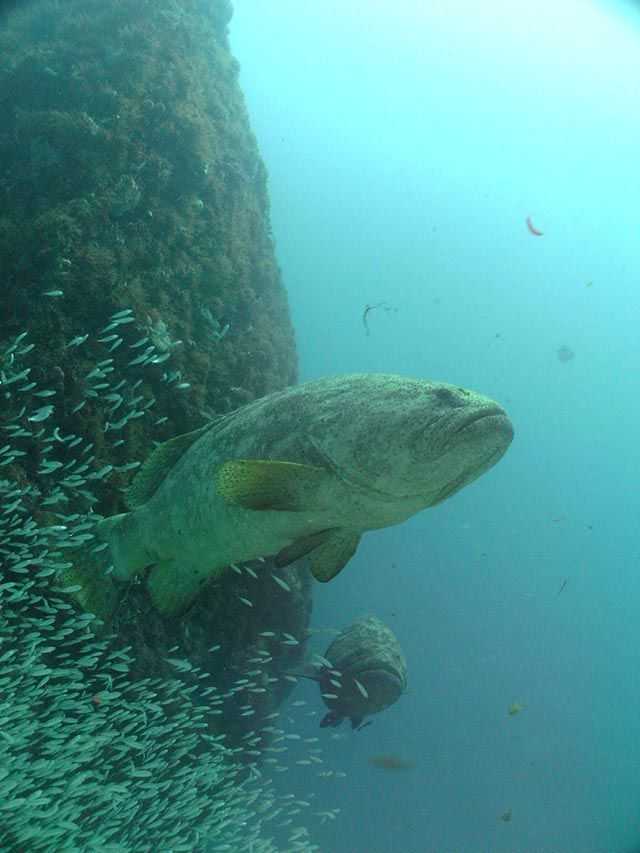
[dropcap]D[/dropcap]ivers can expect big changes to local dive sites as the summer season winds down and fall approaches. Weeks of calm conditions, typical of summertime weather patterns, maybe interrupted by tropical systems moving up from the Caribbean. Beneath the surface events such as the annual goliath grouper migration and the potential for jellyfish invasions will keep divers alert and on their toes throughout September.
During the fall, our area plays host to the largest gathering of goliath grouper in the world. Most artificial structures in our area have year-round resident populations but during the annual aggregation 30 or 40 individuals on a single wreck are common. Divers can count on these underwater giants to arrive in early September and hang around reefs and wrecks for a month or more. Special trips are organized by local dive operators to take advantage of this unique spectacle and divers are encouraged to bring cameras to document their encounters. Considered to be a must-dive by many this time of year, locations such as the David-T in Stuart or the Esso Bonaire of Jupiter are hot spots for experiences available nowhere else in the world.
Another common animal divers may encounter this time of year are jellyfish. Every year, outbreaks of large pink moon jellies drift past area beaches providing an uncomfortable reminder of how the ocean is constantly changing. Concentrations of jellies are usually light and easy to avoid but thick plumes have been reported in years past. Divers can avoid being stung by wearing exposure protection such as wetsuits, hoods and gloves and paying close attention while ascending and descending since jellies usually hang in the upper part of the water column. First aid kits should include vinegar, anti-itch creams or sprays and Benadryl. Avoid using fresh water to rinse affected areas.
Hurricane season reaches its peak during September and despite predictions for low tropical activity this year, divers should pay attention to the forecast anyway. Storms far out to sea may have minimal effect on land but these systems can drastically change the landscape beneath the surface. Large swells generated from tropical storms may shift huge amounts of sand or move wrecks into new positions allowing divers to explore fresh territory. New reefs uncovered after a swell have been reported along with grouper, lobster and large whelk and helmet conch shells scattered over the reef. The Georges Valentine wreck that sits just a few hundred yards offshore of the House of Refuge is a great example of how a dive site may be affected by tropical activity. As sand shifts with each swell, water depths on the wreck maybe as deep as 20 feet or as shallow at 10 feet, depending on the time of year.
Late summer is surely a great time to take advantage of diving opportunities in local waters. Lobster season is open and the goliaths should be arriving at area wrecks right on schedule. Calm conditions should hold unless tropical activity interferes and with the proper gear, even a few jellies won’t spoil all our area has to offer.